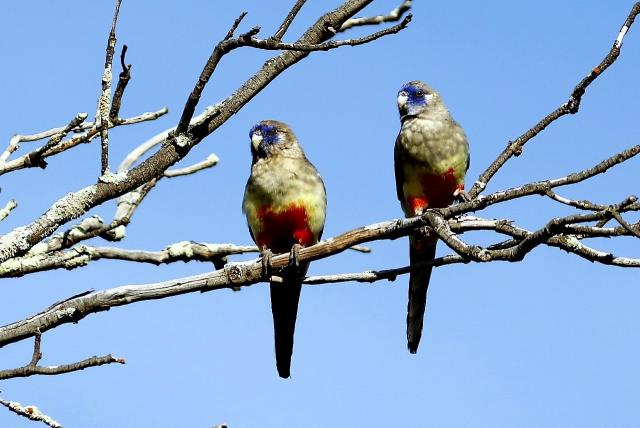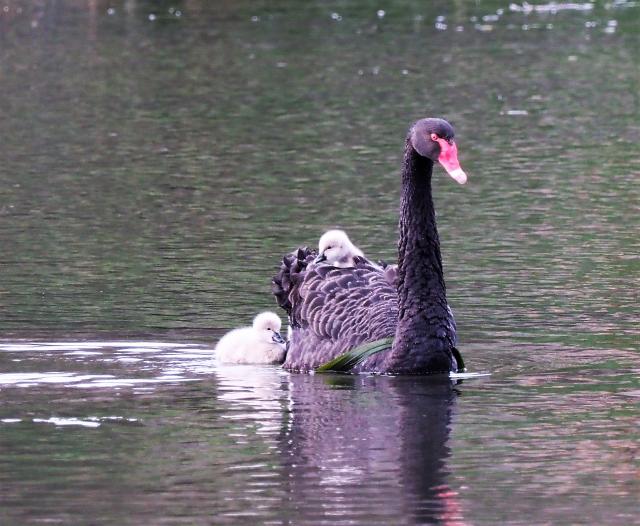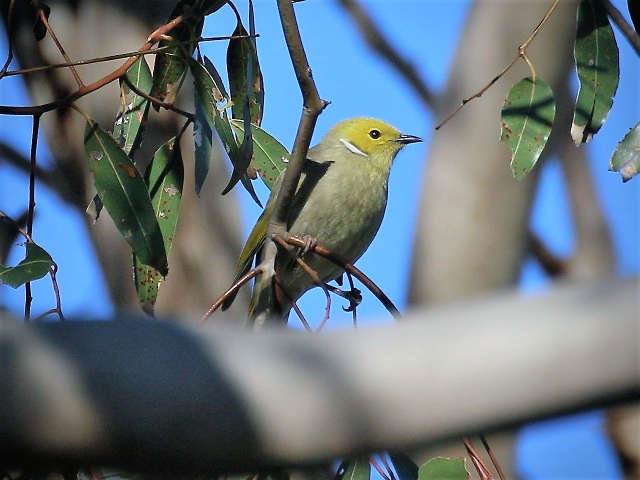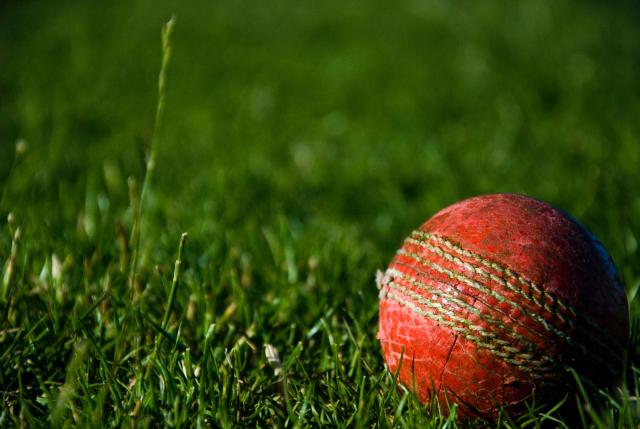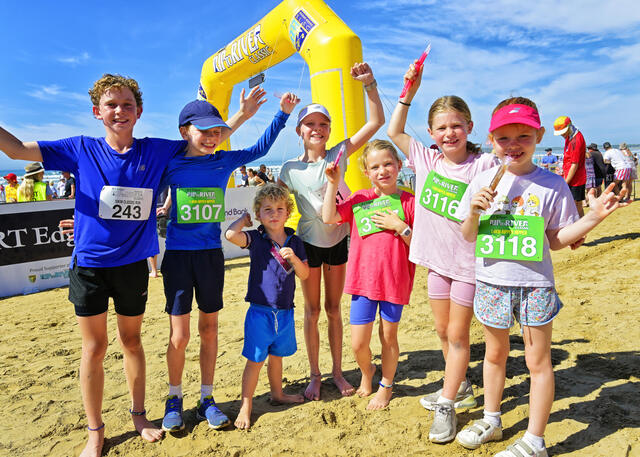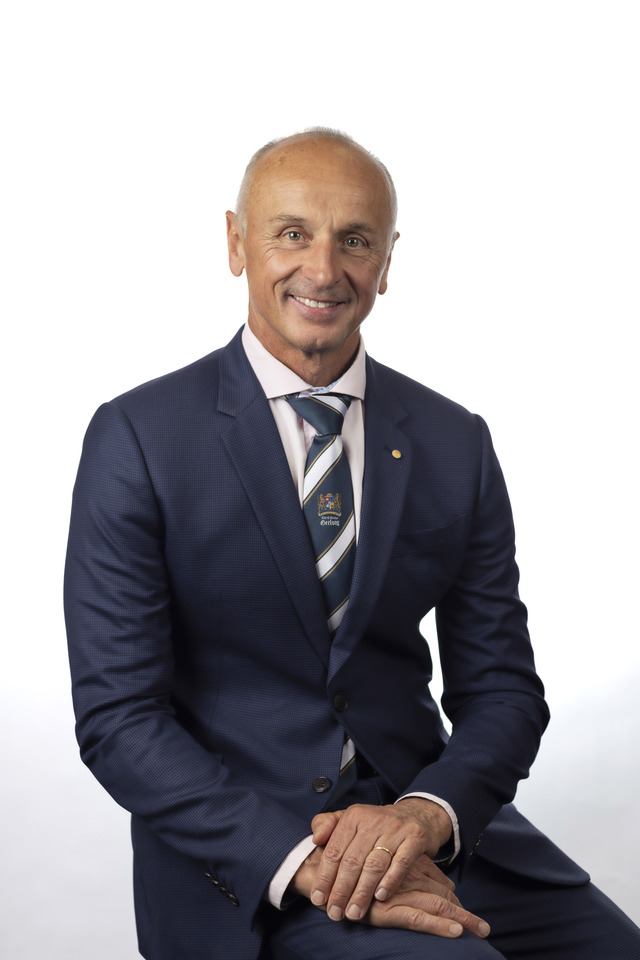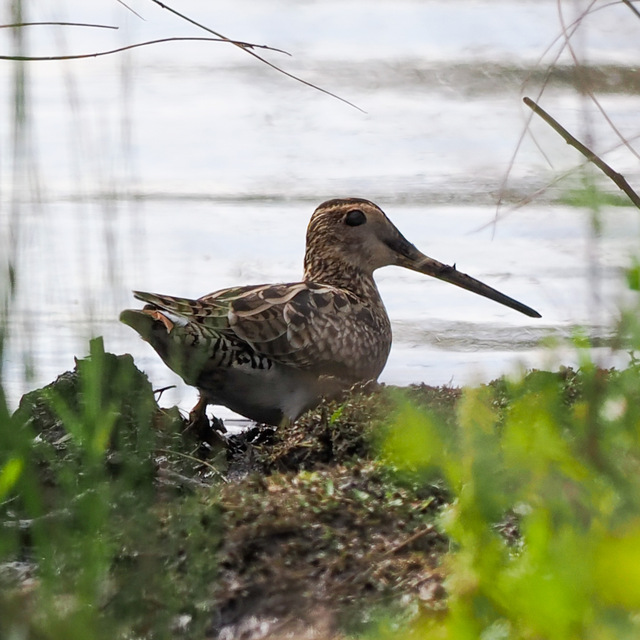Carole O’Neill, who is the past president of Bellarine Birdlife, will talk at the Ocean Grove Library on September 29 at 5pm with the aim of widening the knowledge of Bellarine birds.
Carole also informed me that she walked around Blue Waters Lake when the weather was wet and cold and searched for a tawny frogmouth that another ‘birder’ had spotted, to no avail.
Tawnies are so good at blending into the environment, sometimes it’s just pure luck when you spot them.
Alan has also been walking around Blue Waters Lake and managed to see and photograph a tawny, so hopefully he bumped into Carole and was able to point her in the right direction.
I received an email from Denis Sleep, who is an ex-Ocean Grove resident who now lives in central Victoria. He sent some photos of a parrot called a blue bonnet that he photographed around the Mallee region.
This beautiful parrot is medium sized, with a blue forehead and face, and grey to brown upper body and neck, and red on the belly. Blue bonnets live in arid and semi-arid areas where there are low shrubs, trees or open woodland areas to feed and shelter on.
I received an email from Kevin, who ventured to Rice Reserve, where he heard many birds calling but he found it was difficult to see many of them.
He managed to see some willie wagtails, eastern rosellas, yellow-rumped thornbills, red-browed finches, white-plumed honeyeaters and one fan-tailed cuckoo.
I received an email from Glenys, who has been noticing a male flame robin when walking down the hill at the Leopold Lookout, at the end of Ash Road.
Glenys has been walking towards Lake Connewarre early in the morning and has seen the flame robin a few times about halfway down the track, along with other tiny birds in the area. Male flame robins have a bright orange breast and throat, and white plumage on the lower belly and undertail.
The top of their head and back is dark grey and there is a white stripe on the wing. The female is quite different from the male, being mostly brown with a pale wing stripe, and a white outer tail feather.
Flame robins are altitudinal migrants that spend winter in lowland coastal areas, and when spring arrives they return to mountainous forests to breed. I haven’t seen many flame robins around this winter, so it was great to hear about Glenys’s observation.
On one walk around Blue Waters Lake, Alan noted three pairs of rainbow lorikeets active in nesting holes, all in willow trees in different parts of the lake.
Seeing the rainbow lorikeets in this location made Alan recall that several months ago by the same tree there was a fledgling lorikeet hanging on to the reeds for dear life. Alan suspects that the fledgling must have launched itself from the nesting hole and luckily didn’t hit the water, and suspects that this is the same breeding pair of lorikeets returning to the same nesting hole.
Also at Blue Waters Lake there has been a black swan family parading four cygnets. The swans were observed diving for grasses/reeds and flicking them to the young ones.
They came in quite close to the shore around the big willow near the information board on the north side of the lake, allowing for a close-up shot.
They were so close that Alan had to walk back to the fence to get them all in with the prime lens that he was using.
Some residents who fortunately live around the edge of the lake with a view over the nest, mentioned that two chicks hatched first then the other two a couple of days later.
Given they are paddling the full length of the lake, Alan supposed that it was not surprising to see one or more of the cygnets hitching a ride with the parent birds.

